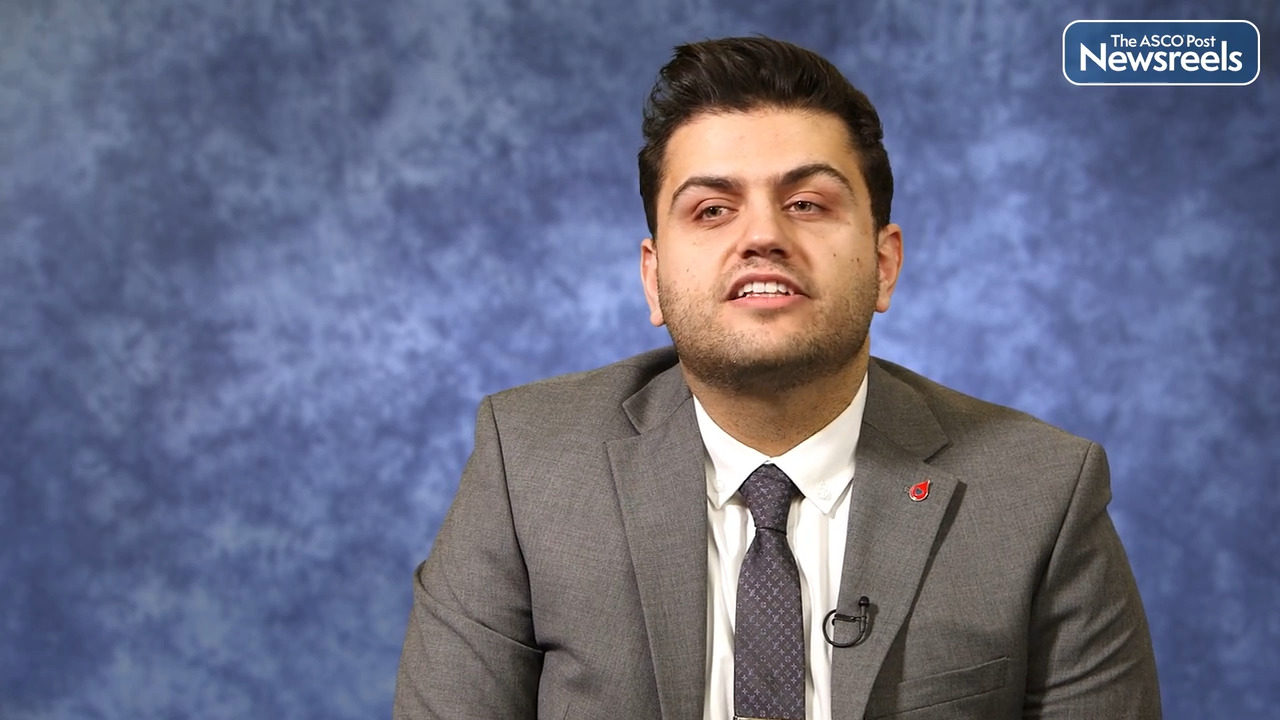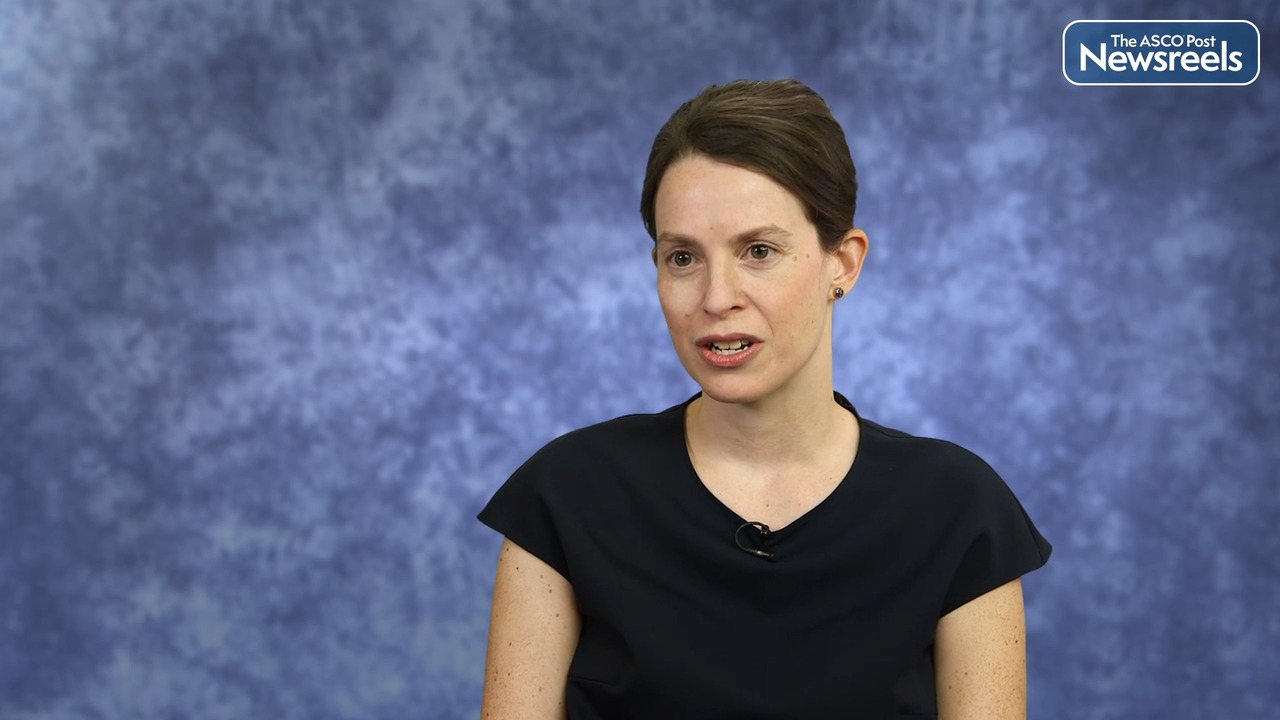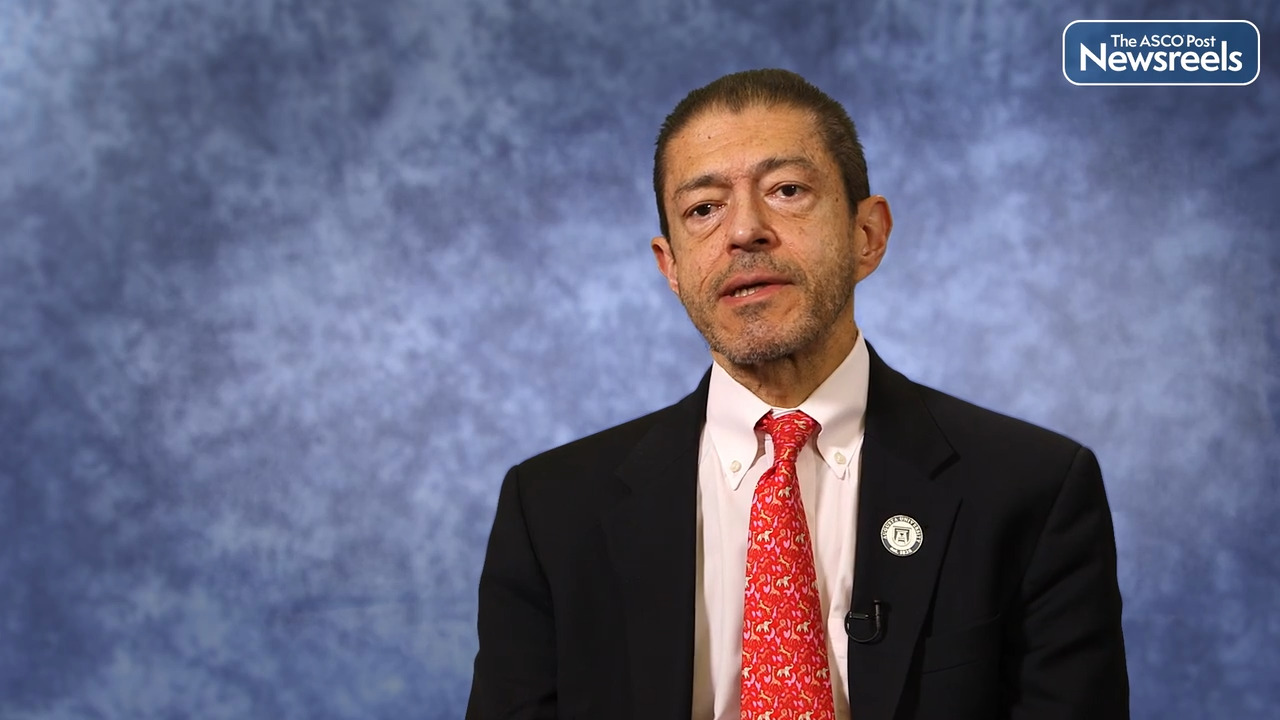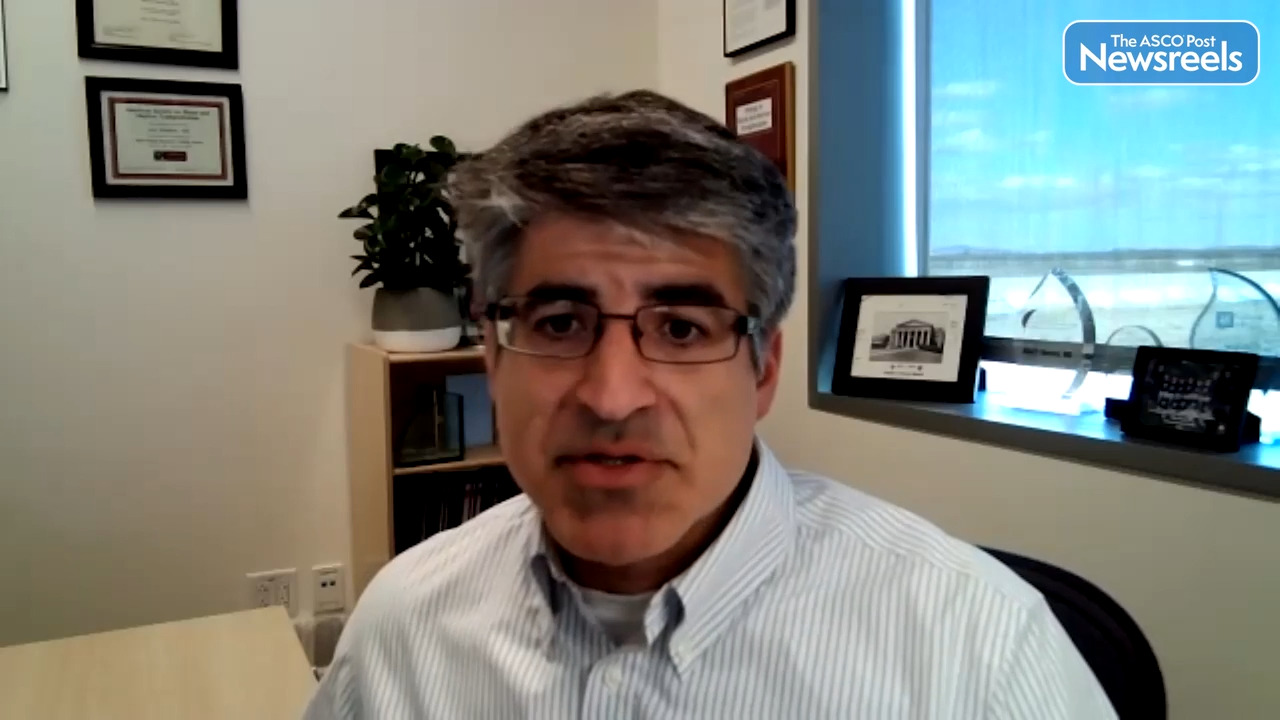Jiye Liu, PhD, on Multiple Myeloma: Genome-Wide CRISPR-Cas9 Screening Identifies KDM6A as a Modulator of Daratumumab Sensitivity
2022 ASH Annual Meeting and Exposition
Jiye Liu, PhD, of Dana-Farber Cancer Institute, discusses study findings that demonstrate KDM6A regulates CD38 and CD48 expression in multiple myeloma. Dr. Liu’s team validated combination treatment with an FDA-approved EZH2 inhibitor plus daratumumab, which can overcome daratumumab resistance in preclinical multiple myeloma models, providing the rationale for combination clinical trials to improve patient outcome (Abstract 148).
Transcript
Disclaimer: This video transcript has not been proofread or edited and may contain errors.
We know that daratumumab is the first in class humanize the monoclonal antibody to target CD38 on myeloma cells. So the daratumumab triggers myeloma cell toxicity through the different molecular mechanisms including ADCC, ADCP and CDC, and the direct killing. And several clinical trials recently using the daratumumab alone and in combination with other agent to treat the newly diagnosed and the relapse, and the refractory myeloma cells then show the high efficacy. However, the relapse of the disease is commonly observed due to the daratumumab resistance. So we are seeking for the molecular mechanism of the daratumumab resistance in our project. We performed the genome-scale CRISPR screening in myeloma cells and find the genes named the KDM6A is most enriched in our daratumumab, positively select the gene list. And we found that the KDM6A is a histone 3 lysine 27 demethylase which activating the gene transcription.
Then we found that we knock out the KDM6A in the myeloma cells and can significantly downregulate the CD38 expression level on the myeloma cells. And associated with the increased H3K27me3 level on the CD38 promote area. We found that the KDM-60 knockout cells showed resistance to the DARAmediated ADCC in vitro and the in vivo mass model. Also by analyzing the [inaudible 00:01:55] in the KDM-60 knockout cells, we found that the KDM-60 also regulate CD48 expression, which is thought to be an NK-activating ligand in myeloma cells. So we knock out the CD48 in myeloma cells, attenuate the DARAmediated ADCC. So this data suggests that the KDM6A mediate ADCC not only by regulating CD38, but also modulate NK activity by the CD48 regulation. So how we can overcome the resistance induced by the KDM6A?
We know the KDM6A and EZH2 mediate the H3K27me3 level together in the cells and balance the genes transcription in the myeloma cells. So it is challenging to elevate the KDM-60 level in the myeloma patient cells. So we hypothesize that whether we can inhibit EZH2 to restore the CD38 or the CD48 expression level in the myeloma cells. So we used the one that FDA approved, the EZH2 inhibitor, to treat the KDM-60 knockout cells and find the CD38 and the CD48 expression level for restore also enhanced DARAmediated ADCC in these KDM-60 knockout cells. Our funding here identify a novel mechanism underlying the daratumumab sensitivity. This funding provided that the EZH2 inhibitor combined with the daratumumab to overcome the daratumumab resistance and for the translation to the clinical trial and improve the myeloma patient outcome.
The ASCO Post Staff
Abdul Rahman Al Armashi, MD, of Seidman Cancer Center, Case Western University, University Hospitals Cleveland Medical Center, discusses a retrospective analysis, using a CDC database, in one of the largest subgroup-based racial population studies analyzing mortality trends in patients with acute myeloid leukemia (AML). Between 2000 and 2019, AML mortality was the highest in Whites and the lowest in American Indians or Alaska Natives. The highest rate of increase in mortality was seen in Asians or Pacific Islanders. Dr. Al Armashi talks about the many variables that might contribute to these inequalities (Abstract 600).
The ASCO Post Staff
Julie Côté, MD, of CHU de Québec–Université Laval, discusses findings from the Canadian Myeloma Research Group database, which showed that integrating bortezomib and lenalidomide into the autologous stem cell transplant (ASCT) sequence produces a median overall survival rate ≥ 10 years in most patients with newly diagnosed multiple myeloma. These observations highlight the contribution of post-ASCT maintenance, particularly lenalidomide given until disease progression, when used in multiple patient groups including those with and without high risk, as well as those requiring a second induction regimen (Abstract 117).
The ASCO Post Staff
Jorge E. Cortes, MD, of Georgia Cancer Center at Augusta University, discusses new findings on vodobatinib, which was administered to patients with chronic-phase Philadelphia chromosome–positive chronic myeloid leukemia (CML) and appeared to be efficacious and safe in people who had received therapy with two or three prior tyrosine kinase inhibitors (TKIs). Vodobatinib remains a potential option for these highly refractory patients. A phase II study (NCT02629692) of vodobatinib is ongoing in CML patients whose disease has failed to respond to three or more TKIs, including ponatinib (Abstract 84).
The ASCO Post Staff
Alex F. Herrera, MD, of the City of Hope National Medical Center, discusses results from the POLARIX study, which showed that circulating tumor DNA (ctDNA) analysis has prognostic value for patients with previously untreated diffuse large B-cell lymphoma. Patients who did not achieve 2.5 or greater log-fold change and/or did not have ctDNA clearance following one cycle of polatuzumab vedotin along with rituximab, cyclophosphamide, doxorubicin, and prednisone had inferior outcomes than those who did. Early changes in ctDNA levels may be of use in risk-adapted trial designs to identify patients in need of alternative treatment. (Abstract 542).
The ASCO Post Staff
Mark R. Litzow, MD, of the Mayo Clinic, discusses phase III results from the ECOG-ACRIN E1910 Trial, which show that adding blinatumomab to consolidation chemotherapy resulted in a significantly better overall survival in adult patients aged 30 to 70 years with newly diagnosed B-lineage acute lymphocytic leukemia (ALL) who were measurable residual disease–negative after receiving intensification chemotherapy. The authors believe this may represent a new standard of care for this population (Abstract LBA-1).





